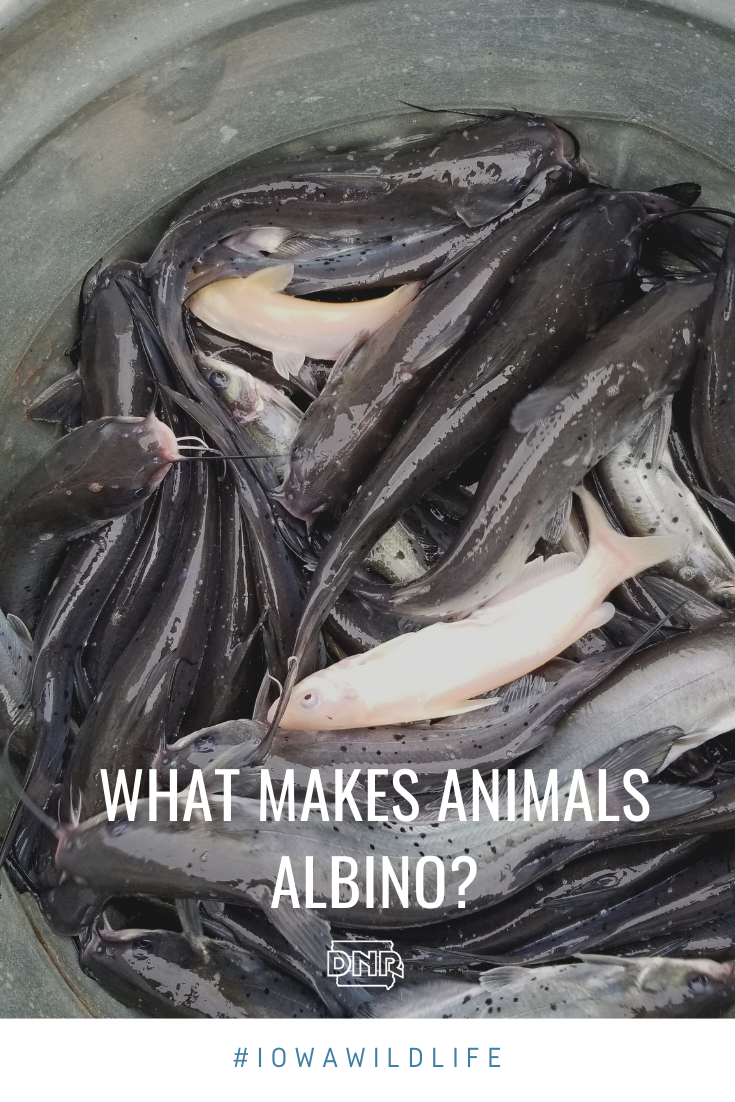If you’ve ever spotted an abnormally white critter, or taken notice of its pink eyes, you may have seen an albino animal! From snails and fish to robins and deer, albinism has been observed in a wide range of Iowa animals.
 Missing melanin
Missing melanin
Albinism is the result of cells that can’t produce melanin, the pigment needed to color skin, scales, eyes and hair. This genetic condition gets passed to offspring when both parents carry the recessive gene. When albinism is present, the animal can appear white or pink.
All or nothing - or something
An animal can be completely albino (pure albino) or have leucism. Pure albino animals will have pink eyes, nails, skin and/or scales. The pink coloration comes from blood vessels showing through the skin. Animals with leucism may have mostly typical but lighter coloration patterns. .
The struggle is real
Aside from appearance, these animals often have problems related to albinism, such as issues with eyesight. Melanin helps eye development, so without it, irises, retinas, eye muscles and optic nerves may not form properly. This can cause issues with focusing, depth perception and tracking in the albino critter.
Since melanin helps protect skin from sunlight, lacking the pigment means a higher risk of developing melanoma. This causes trouble for sun-basking species, often leading to death for the albino animal.
Birds with albinism have a difficult time finding a mate. While many species attract a potential partner with bright colors, a white bird will likely get rejected.
The flip side
While a bright white animal may make you stop and stare, what about an all-black variation? This coloration, called melanism, is due to an increase of melanin in the animal’s skin and fur. This is a hereditary condition, and has been found in various species, including reptiles, amphibians and mammals.
Easy targets
A bright white animal in a green and brown environment can really stand out. This may cause the critter to be spotted more easily by predators due to the disruption of cryptic coloration. Cryptic coloration is the coloring or markings animals have to blend in to their environment. Baby deer have their white spots — an example of cryptic coloration — to blend in with the sun spots shining through to the forest floor. However, there have been instances of albino animals not being recognized as prey due to their strange coloring.
Some amphibians have a different color battle. There have been instances of frogs appearing blue. This is the result of genes that should’ve caused the frog to be green or brown mutating. The mutation causes different wavelengths of light to be filtered out, causing a blue-looking bullfrog.
Except deer
You can not shoot predominately (more than 50 percent) white deer in Iowa. Whitetail deer that are predominately white have been protected in Iowa since the 1980s, as described in Larry Stone’s book, Whitetail Treasure, Trophy or Trouble? A History of Deer in Iowa.” There, Stone writes: “In the 1980s, an albino doe in the St. Ansgar area attracted hundreds of people seeking to catch sight of it or to take a photograph. Local hunters passed up shots at the animal, and farmers guarded it jealously. The uproar when a hunter shot a white deer in another part of the state prompted the Iowa Legislature to pass a law protecting white deer.”